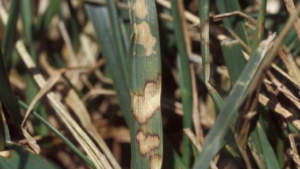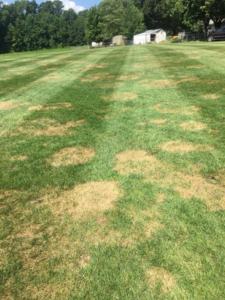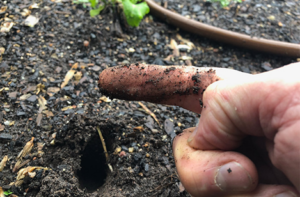Brown Patch
go.ncsu.edu/readext?873478
en Español / em Português
El inglés es el idioma de control de esta página. En la medida en que haya algún conflicto entre la traducción al inglés y la traducción, el inglés prevalece.
Al hacer clic en el enlace de traducción se activa un servicio de traducción gratuito para convertir la página al español. Al igual que con cualquier traducción por Internet, la conversión no es sensible al contexto y puede que no traduzca el texto en su significado original. NC State Extension no garantiza la exactitud del texto traducido. Por favor, tenga en cuenta que algunas aplicaciones y/o servicios pueden no funcionar como se espera cuando se traducen.
Português
Inglês é o idioma de controle desta página. Na medida que haja algum conflito entre o texto original em Inglês e a tradução, o Inglês prevalece.
Ao clicar no link de tradução, um serviço gratuito de tradução será ativado para converter a página para o Português. Como em qualquer tradução pela internet, a conversão não é sensivel ao contexto e pode não ocorrer a tradução para o significado orginal. O serviço de Extensão da Carolina do Norte (NC State Extension) não garante a exatidão do texto traduzido. Por favor, observe que algumas funções ou serviços podem não funcionar como esperado após a tradução.
English
English is the controlling language of this page. To the extent there is any conflict between the English text and the translation, English controls.
Clicking on the translation link activates a free translation service to convert the page to Spanish. As with any Internet translation, the conversion is not context-sensitive and may not translate the text to its original meaning. NC State Extension does not guarantee the accuracy of the translated text. Please note that some applications and/or services may not function as expected when translated.
Collapse ▲If you are irrigating your lawn too much during all this hot weather, you may start to see brown patch develop. Brown patch is a lawn disease that forms when your turf stays continuously wet for 10-12 hours and the temperature stays above 70 degrees. Symptoms increase from over fertilizing with nitrogen, if you have poor soil drainage, lack of air movement, or if you are watering too much or at the wrong time.
Tips for Preventing and Reducing Brown Patch in the Lawn
- Apply fertilizer at the recommended amount given from your soil test report. That’s right… take advantage of free soil samples till November!!
- Avoid prolonged periods of turf wetness… This means if you are watering your lawn, water at the right time and water only when you need to. Irrigation systems should be running BEFORE sunrise. This helps to remove large dew droplets from the leaves and actually speeds up drying time of your turf after sunrise. Instead of irrigating every day, base your application on weather conditions and test if the soil really needs it by a simple finger test.
- In the fall, aerate high-traffic areas to reduce compaction and maintain good soil drainage.
*Finger test method for plants in general*
- Stick your finger into the ground or pot up to the second knuckle.
- If it is dry up to that point, it needs to be watered. If it’s wet, check again tomorrow.
There are many fungicide formulations available to help prevent and cure brown patch in the lawn. Contact our office if you need assistance with controlling brown patch in your turf.







